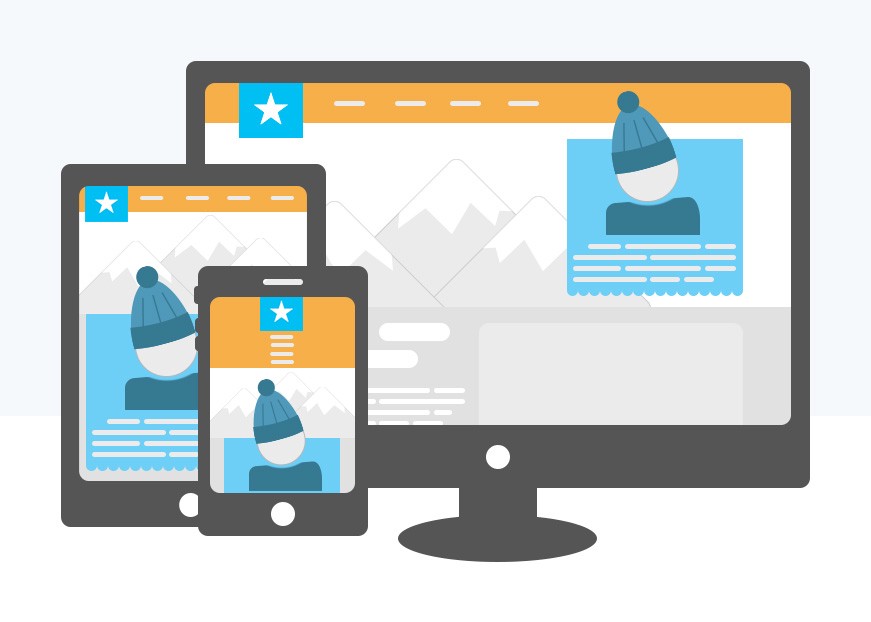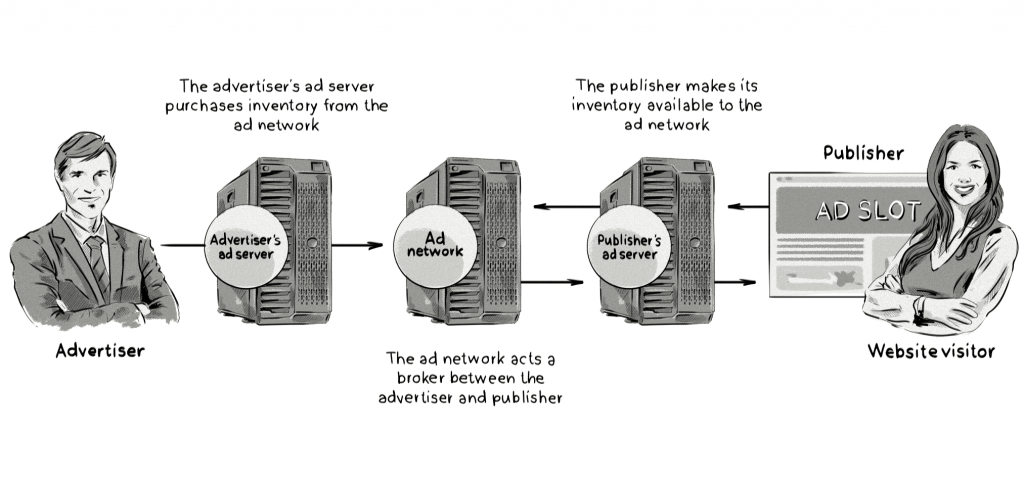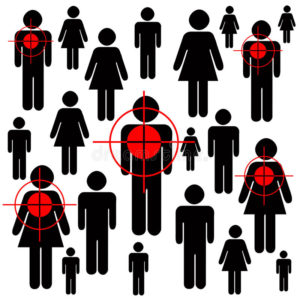The Beginner’s Guide to Programmatic Marketing
What is programmatic marketing? If you’ve heard of programmatic advertising, you are on the right track, as programmatic marketing is another way to expand on that. It is the smart use of automation in buying and selling of media. Simply said, programmatic marketing allows you to forget about the need of an employee to be […]

What is programmatic marketing?
If you’ve heard of programmatic advertising, you are on the right track, as programmatic marketing is another way to expand on that. It is the smart use of automation in buying and selling of media. Simply said, programmatic marketing allows you to forget about the need of an employee to be involved in the buying or selling of media and an automated program does just that for you instead. But does really anyone use that? Can we trust machines to do the job for us?
In 2020, a report by Zenith on the subject claims that almost 70% of all media sold digitally was programmatically traded, and amounted to $122 billion. Talking about digital ad spending in terms of display, the amount spent since 2015 has grown almost three times in 4 years. As shown in the graph below, the amount of programmatic ad buying also continues to rise higher and higher each year.
Programmatic marketing became a thing because it offers businesses a way to be more efficient in managing their budgets for advertising or media agencies. The old school way of doing things was a long process. A media buyer had to call an advertiser, determine the ad, negotiate the terms, and then set up a manual order to buy. Nowadays, purchasing an ad is just a few clicks away. But don’t mistake Programmatic marketing with Marketing Automation. Programmatic marketing is strictly limited to media buying.

Programmatic marketing is limited to paid media buying and namely display advertising since it does not include all paid search (Like Google Ads, for example). Having said that, the data above shows a clear upward trend.
Just 10 years ago, programmatic media buying amounted to less than 10 per cent of the total amount spent on digital display ads. How did it change from 10 per cent in 2010 to almost 90 per cent in 2020? Programmatic marketing follows the tendency to increase each year and takes a larger part of the total amount spent on digital display ads. The empiric data forecast in the graph above, created by IAB clearly shows the amount of programmatic marketing doubling in numbers over the span of 5 years. There surely is a reason why businesses take this route. What makes it so effective compared to other methods?
5 benefits of programmatic marketing
Automating similar processes offers a lot of benefits ranging from cutting expenses to increasing results and overall efficiency. Sometimes people make mistakes, while a well-programmed process eliminates room for error. Programmatic marketing offers a wide variety of smart benefits, that would otherwise be unreachable by traditional ad placement. You get to pay for impressions that you have actually received and can do that with a minimal budget. The bids are arranged for every individual on the site and allow for much better targeting.
1.Real-time data point measurements
Compared to traditional advertising methods like billboards, or prints, you don’t need to wait till the end of the campaign to get results. Every data analyst or marketing expert craves real-time data. Programmatic marketing or advertising shows you the results right away and might tell you which way the given campaign should be nudged toward. Of course, changing the campaign in the first week is not a good idea, yet in some cases, you might decide to do so.
2. Complete control and transparency
Traditional advertising methods lack the control and transparency programmatic advertising gives to marketers. You can see through which sites your advertisements are reaching the customers that you are looking for in real-time. This benefit makes any adjustments in the campaign pretty quick and efficient if done in an educated way.
3. Vast audience reach
If you count the average 3.5 billion people being online every second, hypothetically speaking this is the limit of your campaign’s potential reach. Well, honestly speaking, targeting everyone might not be the best strategy for any product. Always narrow down to a niche audience that is more likely to convert with your product. This reach, however, gives you the ability to reach anyone on the internet, if you decide to and know how to target them.
4. Targeting capabilities
Good advertisers, who use programmatic marketing can reach their exact desired audience right away. Simple examples of this are geolocation targeting or IP Targeting, which allow you to target people in a certain area, if you, for example, are promoting a certain event in a given city. You can target by zip code, keywords, etc. The sky’s the limit. Moreover, retargeting is an option and a recommended one too. If you take into account that the majority of online businesses convert only 2 per cent of their initial visitors, you should think about retargeting.
5. Better efficiency
Measuring how a marketing campaign runs throughout the process is something that allows you to plan better in the future. Experiencing measurements in real-time offers a lot of options for an advertiser on how to further optimise the campaign. Reaching the ideal customers only might be the most friendly path for your budget, which would ultimately give you higher efficiency and return on cost.
How does Programmatic Marketing work?
Programmatic buying always happens via ad exchanges. Ads are sold through complex ad networks, where the publishers have no control of the price. Nowadays, the whole thing exists in unity, where publishers, agencies, networks, and advertisers are in one platform which allows them to buy or sell ad impressions in a fully automated process. When a user clicks on a given website that has advertising space available and is configured for programmatic advertising, the page publisher automatically puts the ad impression for auction in an ad market place or a few market places. The given market place then runs the auction and sees which advertiser would bid the most for the impression.
Ultimately, the ad slot impression is given to the one who pays the most, and the ad is displayed to the user. For example, some users of certain ad groups or locations are more expensive to reach, while others are cheaper. This process takes milliseconds to complete, while the page is still loading.
What are DSP and SSP and how do they work?

Looking at the visual representation of how both sides of the process work, you can see that it all starts with the advertiser. Demand Side Platforms (DSPs) work on the buy-side of the process, whereas Sell-side platforms (SSPs) take care of the action on the right side of the representation. (The Publisher’s server and the Ad Network). The DSP is used by the advertisers, whereas the SSP is used by the publishers. One SSP connects publishers with multiple DSPs and sells the ad impressions for the highest possible price, whereas the DSP allows the advertiser to buy for the cheapest possible price, resulting in a deal. You can differentiate the DSP as a Data management platform, and the SSP as a Data broker in this exchange.
The process goes as follows:
- The advertiser (consumer) goes on the page of the publisher website.
- The ad server of the publisher announces through the SSP that a certain ad inventory slot is available.
- The DSP informs the advertiser through the trading desk, that the given slot is available if they want to make bids and advertise through it.
What is Header Bidding?
Using header bidding is not necessarily involved in all programmatic marketing transactions but most large advertisers used is a common technique since early 2016. Header bidding places a line of special JavaScript in the advertiser’s website header. When a certain page is loaded on the website, the code sends a signal and reaches out to the ad exchanges or SSPs and asks for bids right before the DSP is called, although the bidding is simultaneous from both sides, and focuses on all impressions that are available at the moment.

The catalyst that triggers the entire process is a user requesting a website. Right after, the header tag redirects the user to one or more than one SSPs or Exchanges and the user calls an SSP. The SSPs conduct the auction with the DSPs and check the demand, while the DSPs respond with the bids for the ad slots. The SSPs determine what the winning bid is and returns the information to the initial user. The user then releases the bid value as an ad request, which triggers the Publisher Ad Server that determines the final line and redirects the user. This rather complex program can be better understood by installing browser extensions that show bidding times and bids.
Are ad marketplace platforms the only place to buy programmatic marketing?
Contrary to popular belief, you can still purchase ad slots directly from advertisers or through private marketplaces. There are two options – open RTB, (real-time buying exchanges) and private marketplaces. The most commonly used programmatic ad exchanges for publishers are as follows:
- Google AdX
- OpenX
- DoubleClick
- Smarty Ads
- Smaato
- AppNexus
- Rubicon Project
- PubMatic
Moreover, depending on your country, there might be some local ones, working with different website networks on a local level. Undoubtedly, Google AdX is the largest and most known programmatic network out there. It conducts first-price auctions and gets advertising space sold in real-time. Typically, most small publishers use AdSense, while large ones use AdX, the premium version of it.
The difference between RTB and non-RTB
Real-time bidding (RTB) can be the programmatic marketer’s best tool. How can you know the difference between RTB and non-RTB ads? Well, strictly speaking, RTB offers a lot more benefits. More often than not, most programmatic ad buying is RTB.
Noin-RTB Benefits:
- Is driven by advanced tech, which quickens the traditional media-buying flow.
- Is capable of addressing individual discrete impressions, not only packages of impressions. This leads to a more cost-efficient budget use.
- Is empowered and integrated by consumer data and media usage.
RTB does all that and in addition:
- Matches demand and supply from more than one vendor and buyer through complex buying mechanisms.
- Gets priced in real-time, resulting in a better price, and optimised campaign settings.
- Targets specific groups in terms of behaviour and demographics without favouring any certain vendor or content.
Is programmatic display the right tool for you?
Programmatic marketing is growing each year both in terms of relative share in display advertising and in numbers spent. The only reason why it has not taken completely over the market is that either marketer lacks the knowledge to grasp its full potential or refuse to do so because they are tangled in their old-school methods. If you are looking to increase your conversions by decreasing the cost of your impressions, this might be one of the best and most affordable options. An automated bidding process, although complex, solves quite a few variables for you.


